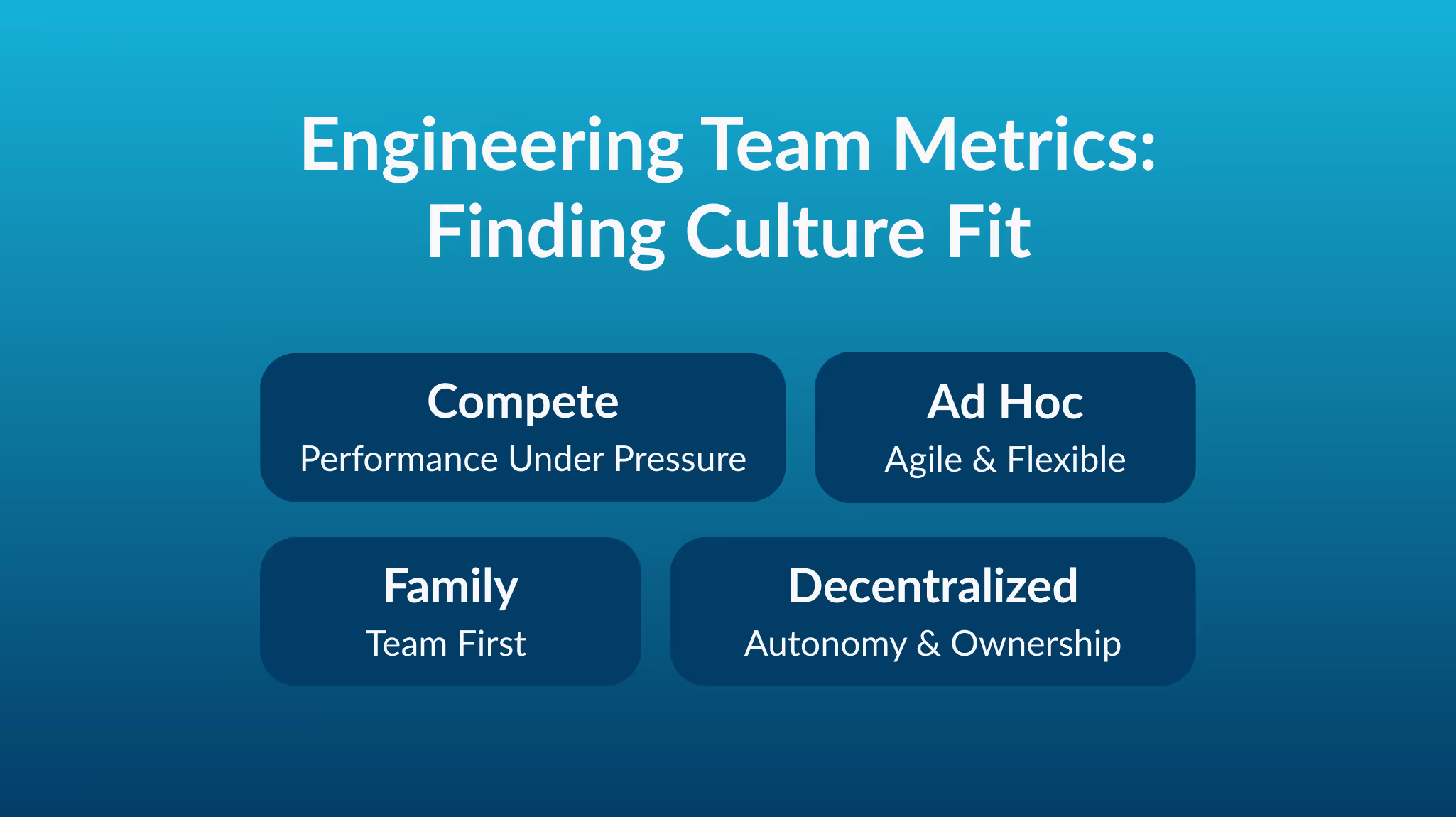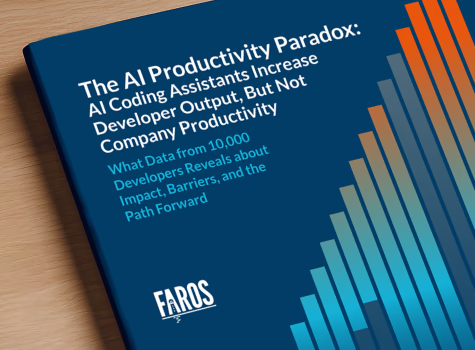Engineering team metrics: How software engineering culture shapes performance
When it comes to building high-performing, data-driven engineering organizations, engineering team metrics are only as effective as the culture that drives them. Metrics don’t exist in a vacuum—they reflect the values, structure, and priorities of your software engineering culture.
In this article, we’ll explore how different cultural models influence what you measure, why it matters, and how to align metrics with long-term goals.
Why software engineering culture shapes metrics
Engineering culture determines the smallest unit of measurement—whether you measure performance at the individual, team, or organizational level. Without cultural alignment, metrics can backfire, creating competition instead of collaboration or stifling innovation with rigid performance tracking.
Four types of software engineering cultures
The following four examples illustrate how different engineering cultures shape the choice of engineering productivity metrics.
1. Compete Culture: Performance Under Pressure
Description: Employees are evaluated on strict performance metrics and periodically stack-ranked.
Metrics: Productivity by level compared against a forced distribution and measured relative to expectations
Best for: Competitive organizations that thrive on high performance and accountability
Risk: Can discourage collaboration if individuals focus solely on personal metrics
2. Family Culture: Team First
Description: Engineering is encouraged to push toward a collective goal rather than individual wins.
Metrics: Productivity measured at the team level (not individual)
Best for: Companies that prioritize long-term trust, collaboration, and collective achievements, or that face restrictions on monitoring individual productivity data
Risk: Individual contributions may get overlooked without clear visibility.
3. Ad Hoc Culture: Agile and Flexible
Description: New teams frequently spin up to collaborate on short-term projects.
Metrics: Productivity measured by collaboration unit (e.g., project, squad, application)
Best for: Fast-moving companies needing rapid experimentation
Risk: May struggle with consistency and long-term accountability
4. Decentralized Culture: Autonomy and Ownership
Description: Self-managed, autonomous teams are given budgets and held accountable for business results.
Metrics: P&L (Profit and Loss) metrics
Best for: Organizations valuing innovation, ownership, and entrepreneurial engineering
Risk: Without alignment, decentralization can create silos and inefficiencies
Common misalignments to avoid
| Culture Type |
Wrong Approach |
Result |
Right Approach |
| Compete |
Team metrics only |
High performers feel undervalued |
Individual + team context |
| Family |
Individual metrics only |
Reduces collaboration |
Team metrics + individual coaching |
| Ad Hoc |
Stable team metrics |
Meaningless data |
Project outcome focus |
| Decentralized |
Process compliance metrics |
Reduces autonomy |
Business outcome focus |
How to choose the right metrics for your software engineering culture
1. Align with Business Goals: If revenue impact is key, P&L metrics matter most. If collaboration drives outcomes, team-based productivity is critical.
2. Consider Scale: Large organizations may need structure (compete or decentralized), while startups thrive in ad hoc or family cultures.
3. Balance Individual vs. Team: Metrics should encourage both accountability and collaboration.
{{engprod-handbook}}
Final thoughts
This article focuses on one of three top considerations for choosing productivity metrics: understanding your software engineering culture. Whether you lean toward competition, collaboration, agility, or autonomy, defining your software engineering culture first ensures that engineering team metrics drive impact rather than friction. The other two considerations—your company stage and operating model—should also influence which metrics your company chooses.
Before finalizing which engineering metrics to measure, take a beat to identify what’s important to you, how you define success, and what productivity looks like to you. Remember, the goal is to create alignment between how people are motivated, how teams work together, and what the organization needs to succeed. When metrics fit your culture, they become improvement tools rather than sources of stress.
To learn how Faros AI can support your software engineering organization, reach out to us today.







